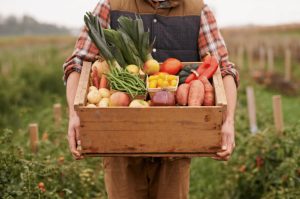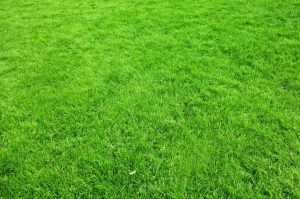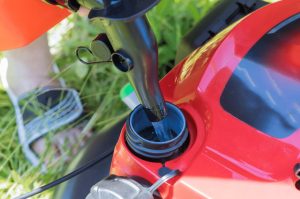Raised bed gardening is a transformative approach that has captured the hearts of many Australian gardeners. It offers a unique blend of control, creativity, and connection to the earth, allowing even those with challenging soil conditions to cultivate a thriving garden.
Whether you’re a seasoned gardener looking to elevate your skills or a newbie eager to dive into this rewarding practice, a wealth of knowledge awaits you.
So, read on because we’re breaking down the art and science of raised bed gardening tailored for the Australian climate and soil.
Understanding the basics of raised bed gardening
Raised bed gardening, often called “garden boxes”, is a gardening method where plants are grown within a raised platform made from various materials, set above the natural ground level. This elevated structure allows gardeners to curate their soil mix, ensuring optimal conditions for plant growth.
Raised beds, particularly favoured by Australian gardeners, offer a structured space for cultivating vegetables. The benefits of this approach extend beyond soil management; it also ensures efficient drainage and simplifies garden maintenance tasks.
If you’re looking around the market for a solution, check out our guide on the best raised garden beds in Australia.
Choosing the right location
Selecting the optimal location for your raised bed is crucial for ensuring the healthy growth of your vegetables.
Here are some key factors to consider:
- Sunlight: Most vegetables require at least 6-8 hours of direct sunlight daily. Ensure your chosen spot receives ample sunlight throughout the day.
- Wind protection: While some breeze is beneficial, a location that’s too windy can dry out the soil quickly and damage delicate plants. Consider placing your raised bed near a fence or hedge for protection.
- Soil quality: Even though you’ll add fresh soil to your raised bed, the underlying soil can still impact drainage and root growth. Opt for a location with naturally well-draining soil or consider improving soil quality.
- Accessibility: Ensure the location is easily accessible for watering, harvesting, and other gardening tasks.
The right location can significantly influence the soil’s quality in your raised bed. For instance, a spot with consistent sunlight can warm the soil, promoting faster seed germination and plant growth. Conversely, a shaded area might retain moisture for longer, benefiting certain vegetables but leading to root rot if not monitored.
Materials for raised bed construction
When constructing a raised bed, the materials you choose play a pivotal role in determining the structure’s longevity and the plants’ health. Here are some materials to consider:
- Recycled timber: A popular choice due to its rustic appearance and durability. Ensure the timber isn’t treated with harmful chemicals, especially if you’re growing edibles.
- Sleepers: These are thick, sturdy pieces of wood, ideal for larger raised beds. They offer a natural look and can last for years.
- Corrugated iron: This material is durable and offers a modern twist to traditional raised beds. It’s especially useful in areas prone to pests as it provides a barrier against burrowing creatures.
- Stone and brick: While these permanent structures require more commitment, they are incredibly durable and can be a beautiful addition to any garden.
- Prefabricated garden beds: Available in various materials like timber, iron, or plastic, these are convenient options for those who prefer a ready-made solution.
When selecting materials, consider their compatibility with the soil type you plan to use. For instance, certain woods can alter the soil’s pH, affecting plant growth. Additionally, opt for environmentally friendly materials that won’t leach harmful substances into the soil.
Remember, the key is to choose materials that not only suit your aesthetic preferences but also support the healthy growth of your vegetables and ensure the longevity of the raised bed.

What is the best soil composition for raised vegetable beds?
Australia’s best soil composition for raised vegetable beds is a well-balanced mix of loamy soil enriched with organic matter such as compost and well-rotted manure. This blend ensures optimal drainage, retains moisture, and provides essential nutrients for vegetable growth.
However, understanding the specifics of soil types and their characteristics can help gardeners tailor their soil mix to suit specific vegetable needs.
Soil types and their characteristics
Australia boasts diverse soil types with unique characteristics that can influence vegetable growth. Here’s a breakdown:
Sandy soil: Characterised by its coarse texture, sandy soil ensures excellent drainage but can dry out quickly. While it’s easy to work with, it might require frequent watering and the addition of organic matter to retain moisture and nutrients.
Clay soil: Dense and heavy clay soil retains moisture well but can become compacted, hindering root growth. It’s rich in nutrients but has poor drainage. To improve its structure for vegetable gardening, consider adding compost and sand to enhance aeration and drainage.
Silty soil: Silty soil feels soft and soapy to the touch. It retains moisture well and is more fertile than sandy soil. However, it can compact easily, so regular loosening and adding organic matter can be beneficial.
Loamy soil: Often considered the gold standard for gardening, loamy soil is a balanced mix of sand, silt, and clay. It offers excellent drainage, retains moisture, and is packed with nutrients. Most vegetables thrive in loamy soil.
Peaty soil: Dark in colour and rich in organic matter, peaty soil is acidic and retains moisture well. While not common in all parts of Australia, it can be improved with lime to adjust its pH and make it more suitable for vegetable growth.
For Australian gardeners, understanding the native soil type in their region is crucial. Depending on the soil type, one might need to make adjustments by adding organic matter, sand, or other soil amendments. For instance, if you’re working with sandy soil, enriching it with compost can boost its nutrient content and moisture retention capabilities, making it more conducive for vegetable growth.
Nutrient management
For a vegetable garden to truly thrive, it’s not just about the soil type but also the nutrients within that soil. Just like humans need a balanced diet to function at their best, plants, too, require a mix of essential nutrients to grow, flower, and produce.
Here’s a quick overview of the essential nutrients for your raised garden:
- Nitrogen (N): Vital for leafy growth, nitrogen is essential for plants in their early stages. It promotes the growth of leaves and stems, making it crucial for leafy vegetables like lettuce and spinach.
- Phosphorus (P): This nutrient is essential for root development and energy transfer within the plant. Root vegetables like carrots and potatoes particularly benefit from phosphorus-rich soil.
- Potassium (K): Important for overall plant health, potassium aids in flower and fruit production. It’s vital for vegetables like tomatoes and peppers.
- Calcium: Essential for cell wall development, calcium helps in root and leaf development. It’s crucial for vegetables like broccoli and cabbage.
- Magnesium: A component of chlorophyll, magnesium is vital for photosynthesis. Leafy greens require a good amount of magnesium for healthy growth.
- Sulphur: This nutrient aids in enzyme activation and protein synthesis. Plants like onions and garlic benefit from sulphur-rich soil.
It’s also important to consider how organic matter is pivotal in improving soil health. It enhances soil structure, boosts its water retention capability, and provides a slow-release source of nutrients. Organic matter, such as compost, decomposed leaves, and well-rotted manure, introduces beneficial microorganisms to the soil. These microorganisms break down organic compounds, making nutrients accessible to plant roots.
Based on our seasoned experience with garden beds (I have one at home), here are some top insights to get you ahead of the game:
- Composting: Regularly adding compost to your garden beds improves soil structure and introduces a wealth of nutrients. Kitchen scraps, garden waste, and even paper can be composted.
- Green manures: Planting cover crops like clover or alfalfa and digging them into the soil can boost nitrogen content.
- Animal manures: Well-decomposed cow, chicken, or horse manure can be a great source of nutrients. Ensure it’s well-rotted to avoid burning plants.
- Worm castings: Worms break down organic matter, producing nutrient castings. Introducing worms to your garden or adding worm castings can significantly benefit soil health.
- Mulching: Using organic mulches like straw or bark conserves moisture and slowly decomposes, adding nutrients to the soil.
Understanding your vegetables’ nutrient needs and organically enriching your soil can ensure a bountiful and healthy harvest in your raised bed. Remember, well-fed soil leads to well-fed plants!
Soil pH and your vegetable garden
Soil pH, measuring its acidity or alkalinity, plays a pivotal role in the success of raised vegetable gardens. Our veggies have a sweet spot on the pH scale, which runs from 0 to 14. They love it slightly acidic to neutral, somewhere between 6.0 and 7.5. That’s where they feel at home, soaking up all the good stuff from the soil.
For raised beds, regular pH testing is crucial. Simple pH test kits from garden centres offer accurate readings. If your soil leans too acidic, adding lime can raise the pH. Conversely, if it’s too alkaline, incorporating sulphur or peat moss can lower it.
Raised beds offer better control over soil composition. However, factors like the type of compost, organic matter, or even irrigation water can influence pH over time. Regularly adding balanced compost can help stabilise pH, and it’s wise to avoid over-fertilising, which can skew pH levels.
In essence, monitor and adjust your soil’s pH for thriving vegetables in raised beds. This balance ensures your plants access the nutrients they need for optimal growth.
Layering techniques for optimal soil health
The foundation of a thriving raised bed garden lies in its soil composition and structure. Properly preparing and layering the soil can significantly enhance plant growth and yield.
Lasagna Gardening Method:
One of the most effective methods we find for layering soil in raised beds is the lasagna gardening method. This technique involves layering organic materials, much like the layers of a lasagna, to create a nutrient-rich and well-draining soil structure.
The lasagna gardening method offers several advantages. It eliminates the need for tilling, fosters a rich and aerated soil structure conducive to root expansion, and efficiently transforms organic waste into a fertile soil medium.
To do this, you’ll need the following:
- Cardboard or newspaper: Start with a layer at the bottom to suppress weeds.
- Straw or dried leaves: This provides a light, airy base, promoting drainage and aeration.
- Compost or manure: Adds essential nutrients to the soil.
- Garden soil: A layer of garden soil introduces beneficial microorganisms.
- Mulch: A top layer of mulch helps retain moisture and suppresses weeds.
To set up your raised bed using the lasagna method:
- Mark the desired area.
- Start with a base of cardboard or newspaper, followed by straw or dried leaves.
- Introduce compost or manure, topped with garden soil, and finish with a protective mulch layer.
All in all, it’s a fairly easy process! If this isn’t the right solution for you, we’ve also found success from double digging or the Hugelkultur method.
Soil aeration and drainage
In the world of raised bed gardening, soil aeration and drainage stand as twin pillars ensuring plant health. Proper aeration allows plant roots to breathe, access oxygen, and grow easily. On the other hand, effective drainage ensures that roots aren’t submerged in excess water, which can lead to root rot and other complications.
Soil compaction is a common issue in gardening, but it’s a concern we can address head-on in raised beds. Compacted soil can stifle roots, making it hard for them to spread and access nutrients. A well-aerated soil structure, facilitated by the right mix of materials and regular maintenance, can prevent this.
Here are some tips we’ve picked up over the years on optimal aeration and drainage:
- Choose the right soil mix: Compost, coarse sand, and vermiculite blend can create a loose and aerated soil structure.
- Mind the base: If you use a wooden or solid base for your raised bed, ensure adequate drainage holes or gaps.
- Mulch regularly: A good mulch conserves moisture and prevents the topsoil from compacting due to heavy rains or watering.
- Watering technique: Water deeply but less frequently. This encourages roots to grow deeper, seeking moisture and ensures they don’t remain waterlogged.
Remember, in raised bed gardening, we can craft our soil environment. We set the stage for robust and healthy plant growth by prioritising aeration and drainage.

Planting and cultivating your raised garden
Embarking on the journey of planting in a raised garden bed is both an art and a science. With the right knowledge and passion, you can cultivate a thriving vegetable haven in your backyard.
Choosing vegetables that thrive in your soil
Every soil type has its unique set of characteristics, and understanding these can be the key to unlocking a bountiful harvest. Selecting vegetable varieties compatible with your soil type can make a difference in their growth and yield.
When it comes to selecting what vegetables to grow based on soil type, we follow these basic guidelines:
- Sandy soil: Root vegetables like carrots and radishes thrive as they can easily push through the loose structure.
- Clay soil: Leafy greens such as spinach and chard benefit from the moisture retention properties of clay.
- Loamy soil: Almost all vegetables, including tomatoes, beans, and peas, flourish in this well-balanced soil.
If you’re keen on growing a vegetable that isn’t naturally suited to your soil type, don’t fret. With a bit of effort, you can adapt to your soil conditions. For instance, adding compost and organic matter can improve sandy soils’ texture and nutrient content, making them more hospitable for a wider range of vegetables.
For more specific guidance tailored to various regions in Australia, explore our detailed planting guides:
- What veggies to plant in Sydney
- What to plant in Melbourne
- Vegetable planting guide for Adelaide
- Vegetables to plant in Perth
- What to plant in Tasmania
Your raised garden bed can be a testament to nature’s bounty with the right choices and care.
Maintenance tips for soil health
Maintaining the vitality of the soil in your raised garden bed is akin to nurturing the heart of your garden. With sustainable practices, you can ensure that this heart beats strong season after season, fostering a thriving ecosystem for your plants.
Sustainable watering techniques
- Deep watering: Instead of frequent shallow watering, opt for less frequent but deeper watering sessions. This encourages roots to grow deeper, seeking moisture and ensures they don’t remain waterlogged.
- Drip irrigation: This method delivers water directly to plant roots, reducing evaporation and ensuring efficient water use. It’s a technique that conserves water and prevents the soil surface from becoming too compact.
- Mulching: By covering the soil with organic mulch, you can retain moisture, reduce evaporation, and prevent the soil from drying out too quickly.
Soil-friendly weed control
- Hand pulling: It’s a classic method but effective. Regularly inspect your garden and pull weeds by hand, ensuring you get the roots.
- Natural herbicides: Consider using natural solutions like vinegar or boiling water for spot treatments. However, use them with caution as they can affect surrounding plants.
- Barrier methods: Using landscape fabric or cardboard beneath your mulch can act as a barrier, preventing weeds from taking root.
Organic practices for soil health
- Composting: Regularly adding compost introduces beneficial microorganisms and replenishes the soil’s nutrient content.
- Crop rotation: Changing the type of vegetables you plant in specific areas can prevent soil-borne diseases and pests from recurring problems.
- Cover crops: Planting cover crops like clover or alfalfa can enrich the soil by fixing nitrogen and improving its structure.
Drawing insights from our experience, it’s evident that sustainable and organic practices are key to long-term soil health. By nurturing the soil with care and understanding, you lay the foundation for a garden that looks and feels good.
Key Takeaways
Raised bed gardening, known as “garden boxes” in Australia, provides an elevated platform for plants, offering superior control over soil quality. This method ensures efficient drainage and eases maintenance tasks. When setting up a raised bed, location is vital. Consider sunlight, wind protection, and soil quality to ensure optimal vegetable growth.
Material choices for raised beds vary from recycled timber to corrugated iron. It’s crucial to pick materials that support plant health and align with aesthetic preferences. The best soil for raised vegetable beds combines loamy soil with organic matter.
Australia’s diverse soil types, including sandy, clay, and loamy, each influence vegetable growth differently. Proper nutrient management, focusing on essential elements like Nitrogen and Phosphorus, is key. Organic additions, such as compost, significantly boost soil health.
Lastly, maintaining the right soil pH is essential. Regular testing and adjustments can optimise nutrient absorption. Emphasising proper soil layering, aeration, and drainage will set the stage for a successful raised bed garden.
With this knowledge, you’ll surely get the most from your raised garden bed!






